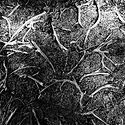Jorge said:
Thnaks DK, now this is more like it should be. Anybody interested in reading about the stability of pigments and dyes should read the article. Very informative and much more complete than the Wilhelm tests. The only objections I had was the humidity chosen, and of course the lack of projection to their results.
a constant 50% RH can only be found in very few places, I live in a semi desertic zone and I know the RH in my house is in between 60 and 70%. Places like Arizona, Utha, or New Mexico might have at given times a 50% humidity but rarely is it constant.
OTOH I was glad to see that someone finally addressed the problem of pollutants and the effect of free radicals.
I would have liked to see how they plan on making projection predictions out of the data they obtained.
Most gratifying is the fact that their data conforms to the anecdotal data reported by people, ei, dyes fade faster than pigments, pigments also fade albeit at a slower rate, environmental pollutants have a significant effect on fading and color reproduction, specially in the "neutral" tones is rarely neutral thus affecting the color response and fading qualities.
Very good paper DK, thanks again.
True--but the group that paper was probably intended for were conservators in archives...the standards that are used almost universally are for ranges that are 30-50% rh, and less than 70 degrees F. The ranges are around 2-5% above or below for RH and same for temp. We have an HVAC system in our building that's like this for the exhibit galleries and storage areas. It basically heats & cools at the same time. The conservators track it daily on hydrothermograph dataloggers posted around the facility.
-----------------------------------------------------
Typical recommendations might be--let's see:
b&w--medium term: 20-50% rh/77 degrees F max.
longterm: 20-30% rh/ 70 deg. max.
or 20-50%/ 50 degrees max.
color---medium term: 20-50%/77 degrees max.
longterm: 20-30%/ 35 degrees F max.
or 20-50%/ 15 degrees F max.
then :
"cool" storage:
35-59 degreesF/30-40% rh.
"cold":
35 or less degrees F/ 30-50% rh.
-------------------------------------------------------------
I have a datalogger next to me, and it reads 71 degrees F and 45% RH today. We put indicators in some of the file cabinet drawers as well--and I just looked at one and it reads 70 and 40% rh. If the room outside cycles around, it takes a couple of days to actually get into the drawers if they stay closed...this is just for my office basically-and the little room we use to file our working negs and chromes in...
The big danger is humidity--if it gets above 65%, then mold spores can become a problem. The tradeoff, then, is to control the humidity in a way where the temps don't get too high--for color, the temp is the aging factor in with the light damage. For b&w, humidity is more a factor.
On that same pollution control site, there's a paper somewhere dealing with the realistic issues of maintaining those standards around the world. Someplace like Anchorage, Alaska was one of the only "natural" environments....but archives & museums would be trying to keep the RH down under 50 and under 70 degrees year round--just out in open areas. In storage areas, the temps & rh might be much less. There are some areas of our building that are downright frigid...
Here's a site the IPI runs for preservation. If you download the "Preservation Calculator", you can get an idea of how they extrapolate data for designing film & print storage areas mainly, but it could be used for other organic materials....this is also offered in conjunction with with their guide to acetate based film storage--you can buy it from Light Impressions, Univ Products etc or you can get it as pdf file for free from their site. They have some similar (not free) publications for color materials.
There's more of this out there--it's mostly on sites aimed at archives and museum profession.
http://www.climatenotebook.org/
IPI:
http://www.rit.edu/~661www1/
BTW--supposedly the ANSI/ISO photo materials group has split into sub-groups to try to come up with a test for inkjets and other computer output materials....
KT
my opinions only.






